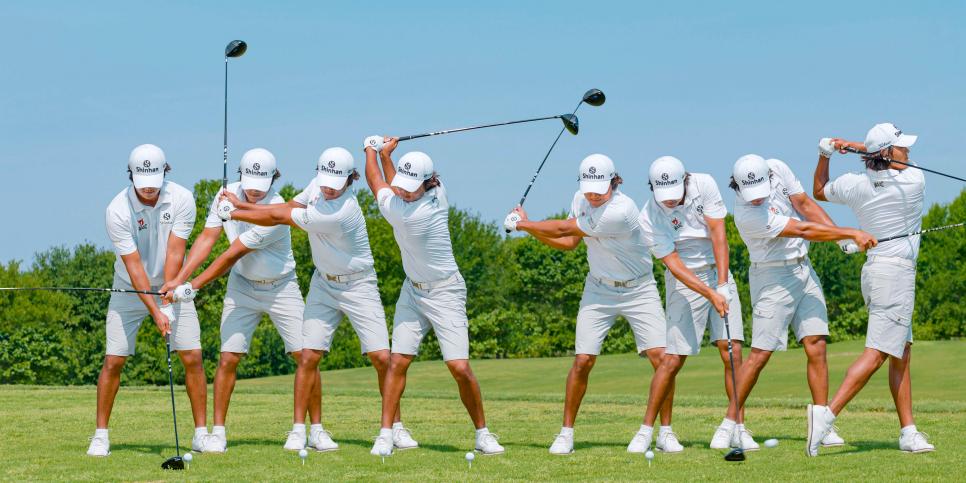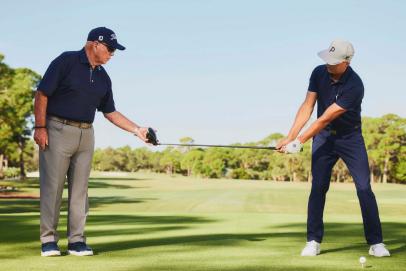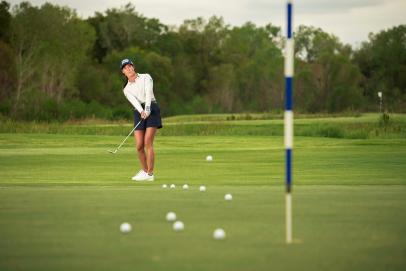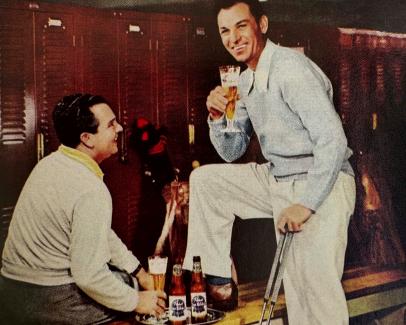Swing Sequence
S.H. Kim’s three keys to take charge of your drives

Photographs by J.D. Cuban
Off the tee, South Korean S.H. Kim was a full 10 yards longer than his more famous countrymen, Tom Kim and Si Woo Kim, in 2022-’23. Yet the PGA Tour rookie doesn’t equate the top drivers by who hits the ball the longest or the straightest, but by who controls the shape and trajectory better than anyone else.
“There are countless players whose swings I admire,” says the 5-foot-11, 180-pound Kim, who ranked 36th on the PGA Tour in driving distance (308.7 yards) and 27th in strokes gained/off the tee through mid-October. “I particularly like Adam Scott’s and Rory McIlroy’s swings. Lately, though, I’ve been more into Rory’s swing. He’s great at shotshaping. He can control almost any shot he draws up in his mind.”
Although Kim, the 2022 Korn Ferry Tour Rookie of the Year, will be looking to improve his accuracy (56.5 percent or 126th on tour) off the tee next season, he’ll be spending much of his offseason practicing various ball-shaping techniques. He believes that improving this skill will help him earn his first PGA Tour title. Kim nearly broke through in mid-September, finishing only two shots back of Sahith Theegala at the Fortinet Championship.
“I don’t have a particular ball flight that I consider my best,” Kim says. “It really depends on the situation, like being able to control the trajectory of the ball when I’m facing a hole that is uphill or downhill and shaping shots when I see a dogleg left or right. Whenever I can hit a drive exactly how I drew it up, that is my best drive.”
There are several keys to hitting a fade or draw, Kim says. For a fade, he sets his feet and shoulders more open, or pointed left of his target at address (above, first image), which promotes an out-to-in swing path through impact. With a draw, his stance is more closed, or pointed right of the target, encouraging an in-to-out path.
When Kim wants to hit the ball hard or sling it around the corner of a dogleg, he looks to generate more rotation in his upper body on the backswing, turning his lead shoulder until it’s almost even with his trail foot at the top. With a fade, the shoulders rotate just slightly short of his right foot (above, fourth image). For both shots, Kim suggests that you turn your upper body until your back faces the target at the completion of your backswing—a frequent checkpoint of his—because the driver requires the most rotation of any shot.
“I don’t necessarily think about this too much, but with continuous practice it has become a natural habit,” Kim says.
As for the finish, Kim says it’s vital that his eyes and chest face the target (above, eighth image). For a fade, his hands will finish more in front of his torso, and for a draw, a little more around his body.
On the range, practice to an imaginary fairway, shaping the ball based on what the hole demands. This kind of real-time training is super helpful to curving your shots on command.
Interviewed with help from S.H. Kim’s translator and agent Danny Oh.
Hope you enjoyed this story! If you have someone who loves golf in your life, there's no better gift this holiday season than Golf Digest+, the ultimate experience on how to play, what to play and where to play your best golf.




